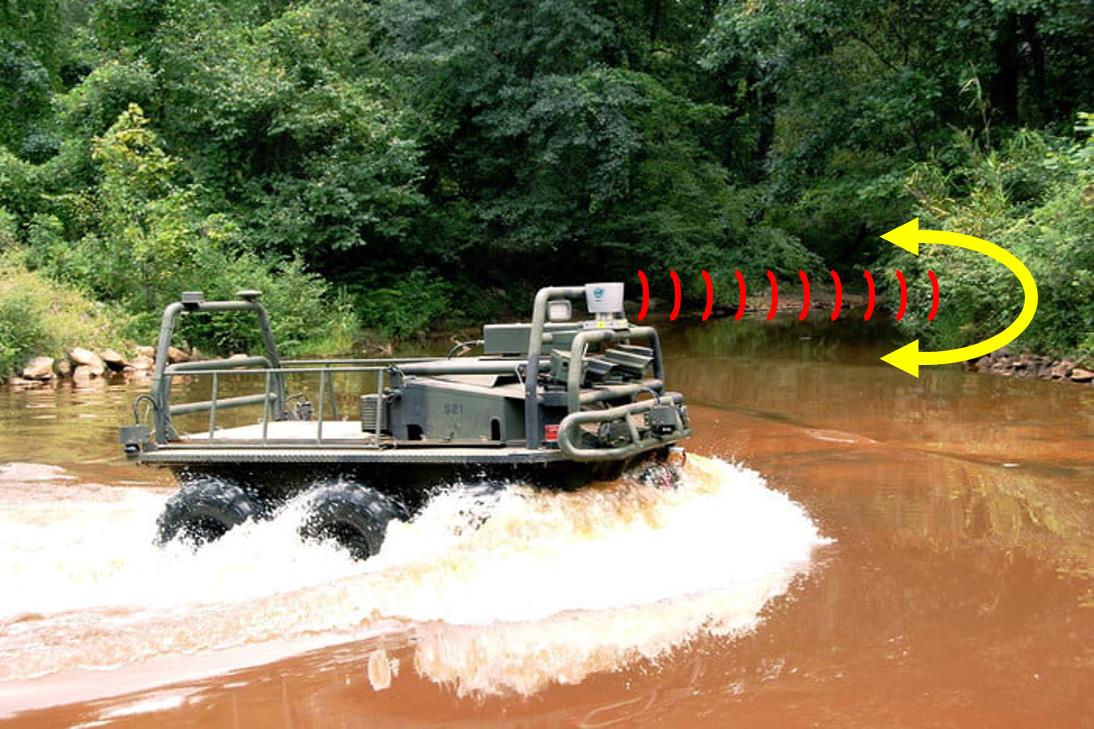Advanced Structures & Materials
Annual PlanSonar-Based Sensors for Autonomous Vehicles Using Passive and Active Metamaterials
Project Team
Government
Ravi Thyagarajan, U.S. Army GVSC
Industry
Mert Egilmez, Veoneer-Nissin
Student
HyungSuk Kwon, University of Michigan
Project Summary
Project began in 2019 and was completed in 2020.

To operate autonomously in dynamic and uncertain environments, autonomous vehicles (AVs) must construct and continuously update a world model. Hence, they require robust, reliable, low power sensors that provide a 3D map of the surroundings in real-time while operating stealthily for long periods of time and in a variety of adverse, changing conditions (rain, snow, fog, bright light, and darkness). LIDAR is the most prominent sensor system in use.
We propose that ultrasound (US) sensor systems acting as the acoustic analogues of LIDAR maintain efficiency in any kind of weather including rain, snow and fog. Moreover, they are stealthy because sound is rapidly absorbed in air and does not travel too far. Nevertheless, the current generation of US sensors have significant limitations that have prevented their wide spread use. Their biggest drawback is that they produce maps of the surroundings of very low resolution. In addition, US beams spread much faster than laser beams due to their much larger wavelength, which leads to a significant reduction in sensor range. Current US sensors have a range of less than 10 meters.
We envision that manipulating acoustic waves after their generation and before their sensing with nonlinear artificial materials having carefully engineered micro-structure will address the limitations of current acoustic imaging technology and will lead to performant US sensors for 3D mapping of the environment.
The main goal of this project is to create sonar-based sensors for autonomous vehicles using passive and active metamaterials. We envision acoustic sensors that create high-resolution images of same quality as low-end LIDAR systems, employ a single active transducer element and thus are low power and low cost, are stealthy, and operate for long periods of time in any weather.
References:
- B. Schwartz, LIDAR: Mapping the world in 3D, Nature Photon., 4:429, 2010.
- Velodyne LIDAR, http://velodynelidar.com, Accessed October 8, 2018.
- K. Nakajima, C. Premachandra, and K. Kato, 3D environment mapping and self-position estimation by a small flying robot mounted with a movable ultrasonic range sensor, J. Electrical Systems and Information Technology, 4:289-298, 2017.
- L. Alonso, V. Milanes, C. Torre-Ferrero, J. Godoy, J. P. Oria, and T. de Pedro, Ultrasonic sensors in urban traffic driving-aid systems. Sensors, 11:661, 2011.
- S. A. Cummer, J. Christensen, and A. Alù. Controlling sound with acoustic metamaterials. Nature Reviews Materials, 1:16001, 2016.
#3.15, 3.A61

